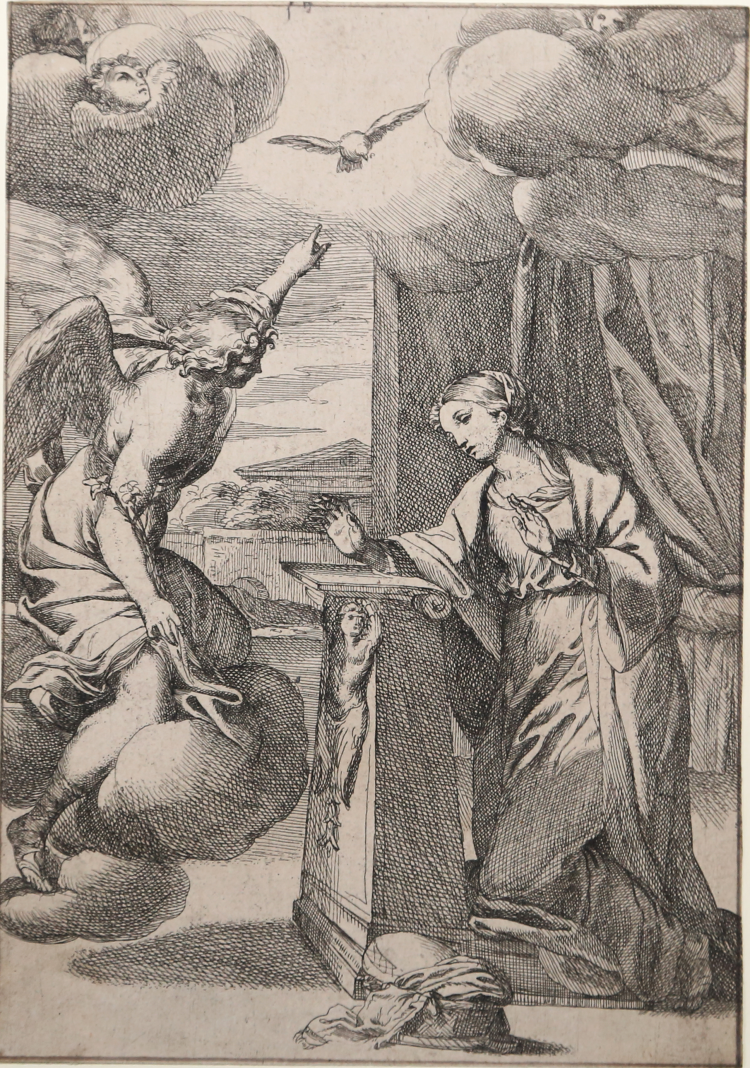




| Reference: | S24159 |
| Author | Carlo MARATTI |
| Year: | 1650 ca. |
| Measures: | 143 x 214 mm |



| Reference: | S24159 |
| Author | Carlo MARATTI |
| Year: | 1650 ca. |
| Measures: | 143 x 214 mm |
Etching, 1650 circa, without signature.
Example in the very rare first state of two, before the signature was added.
Frequently depicted in art, the Annunciation was the moment that the Angel Gabriel visited the Virgin Mary and announced to her that she would conceive and become the mother of Jesus, the Son of God. The source is Luke 1.26-38. Gabriel is traditionally shown handing a white lily to the Virgin, as here; he interrupts her while she is reading, demonstrated by the open book on the table.
A drawing in red chalk, that is a finished studio variant of the engraving is in the Royal Collection – Windsor RCIN 904181 (cfr. Blunt, A.F. & Cooke, H.L., 1960. The Roman Drawings of the XVII and XVIII Centuries in the Collection of Her Majesty The Queen at Windsor Castle, London – B(R) 306)
The examples of the first state were probably just proofs and, therefore, are to be considered very rare.
|
Bartsch vol. 21, 4.
|
Carlo MARATTI (Camerano 1625 – Roma 1713)
|
Italian painter, draughtsman and printmaker. He was the last major Italian artist of the classical tradition that had originated with Raphael, and his pre-eminence among the artists of his time marks the triumph of classicism. Nonetheless his art unites the virtues of disegno and colore, and he created a grandiose and decorative style that satisfied the demands of the Church. At the same time his late works had a grace and refinement that anticipated the development of the Rococo and Neo-classicism.
|
|
Bartsch vol. 21, 4.
|
Carlo MARATTI (Camerano 1625 – Roma 1713)
|
Italian painter, draughtsman and printmaker. He was the last major Italian artist of the classical tradition that had originated with Raphael, and his pre-eminence among the artists of his time marks the triumph of classicism. Nonetheless his art unites the virtues of disegno and colore, and he created a grandiose and decorative style that satisfied the demands of the Church. At the same time his late works had a grace and refinement that anticipated the development of the Rococo and Neo-classicism.
|